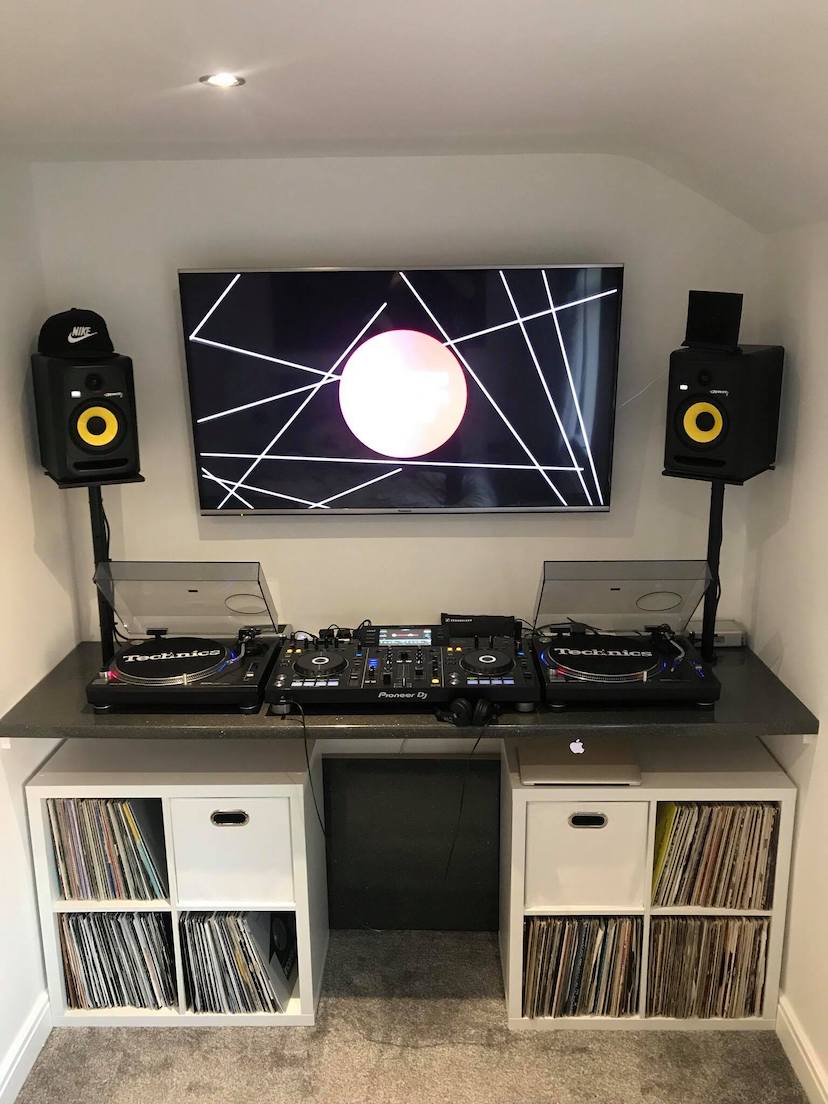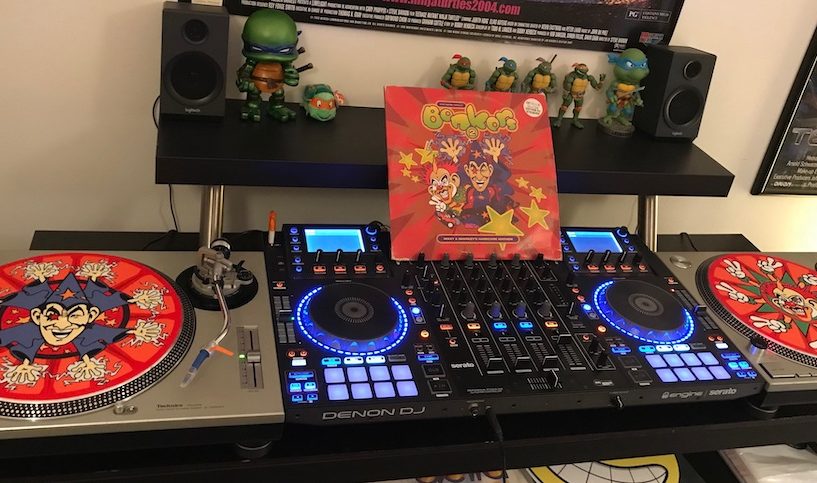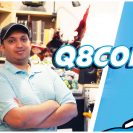Last month we had a very brief look at the roots of DJing, the difference between how it used to be vs now, the ideal scenario in which to begin DJing and the all important first step to master in order to be on the road to success behind the decks.
This month is all about getting set up and ready to mix, scratch and blend away. We need a few things to do this, and that’s where your first big decision comes. Do you want to kick it old school and get some vinyl turntables? Keep it digital and use a controller? Or meet in the middle and get some CDJs? We’ll take a look at all the options.
Most would agree that it’s beneficial to be able to learn and use all formats and equipment if you can, especially if you eventually get to DJ out and may be playing at a venue that has its own gear. It never hurts to be versatile! I myself learnt with vinyl (as it was the only option when I started but I wouldn’t have it any other way), I skipped the CDJ craze and went onto using controllers so I currently have my two turntables and a digital controller with laptop. This works for me because I have the comfort and familiarity of vinyl mixing, and the convenience and speed of digital.
So let’s start with the first (and in my opinion, best!) format: Vinyl. You want to try and find direct drive decks, rather than belt drive; direct drives have a stronger motor allowing you to manipulate the record better. Belt drives can slow the plater down when you touch it, and over time the belt can become worn and snap. There is an easy choice if you want to DJ with turntables; look no further than Technics, as any DJ worth their salt will tell you. Technics have been the professional DJ’s choice since they were introduced in the 1970s and for good reason-they’re built like tanks. Very strong, reliable, and if looked after they rarely break. Look for Technics 1200 or 1210, from any year (of course the more recent the better), they will probably be used so it’s essential to do your research before buying and test them where possible.

Be warned that here in Kuwait, it’s extremely hard to find them though. You’re most likely going to have to import them, which won’t be cheap due to their weight. As well as that, you’re going to have a very hard time getting vinyl, unless again you import it which can also be costly. However, you can use timecoded vinyl which makes matters much easier. A timecoded vinyl is a normal looking record, that when combined with certain software and a DVS compatible device will let you play any digital track via the record. There’s plenty of information and tutorials online so go investigate, it’s a brave new world! Remember, you’ll also need a mixer to connect your turntables to, more on that below. Oh and you’ll need some slipmatts-these are felt material matts that sit on the platter and allows it to move while you cue the vinyl, hold it in place, scratch etc. There are thousands online to choose from, or you can have custom ones made to add the ultimate personalization to your set up.
Next are CDJs. Again, which to buy is an easy choice as the industry standard are the Pioneer CDJs. Of course, the newer the model, the more expensive, so depending on your budget depends on which ones you would want to get. They are all consistently reliable and sturdy, though I would say to try and get the newest you can afford, just to ensure they are well future proofed (try to avoid the very first ones, for example, as they don’t have USB stick support and miss a lot of features that the newer ones have). Once again, with this option, you’ll need a mixer to hook everything up.
Then you have digital controllers. These are the things you’ll see most DJs using nowadays, especially here in Kuwait. There are many different brands and models out there, ranging in price from extremely cheap to extremely expensive. While most go for Pioneer controllers, my own personal one is the Denon MCX8000. It’s a top end controller with all the pro features you could need, at a fraction of the cost of the (in my opinion) overpriced Pioneers and I can’t recommend it enough. Back to the subject of budgets, you can find decent controllers with more than the basic features for little cost, and if you look for a used one you can save even more money. The beauty of controllers is that they are literally an all in one package-you have your controls and platters on the left and right, and the mixer in the middle.
I mentioned the word mixer a few times, and it’s probably the most important piece of equipment when DJing. This is the box with all the buttons and faders that sits between your hardware, and lets you cross from one tune to the next, add effects or samples, alter volume on each track as well as EQ levels (bass, treble and mid-range) and much more. For that reason, it’s essential that you research and do your homework before buying your mixer. There are hundreds to choose from, with Pioneer again being the industry standard but so many other brands that do the same, or a better job. Think about what you want to do, apart from mixing one song into another; do you want to use samples? Effects? How much tweaking would you like to do with your set? Do you need more than the basic 2 channels? Want to learn to scratch? If you’re planning to use the above mentioned timecode vinyl, you need a mixer that supports DVS, so look out for this.
As a side note, whatever equipment you chose, you can always add to your set up later on, so don’t think you’re tied into whatever you begin with forever. Also, as long as your budget allows, I would recommend to jump straight in and buy the best equipment you can from the start. If you have a tight budget then go ahead and get what you can, after checking reviews to make sure it’s reliable first, but if you can afford to go all out then do it. It doesn’t hurt to learn on the best!

My unpopular opinion: It doesn’t make any sense to use CDJs nowadays. During the time they really dominated, the mid 2000s was the time I had a break from DJing. Had I been active these years, no doubt I’d have got some CDJs. Most DJs that do use them use USB sticks on them, rather than CDs, and if you’re going to do that-you might as well just have a digital controller that either supports USB sticks or just use it with software (more below). Good controllers have all the features of CDJs, but are often cheaper and their ‘all in one’ nature makes transporting much easier.
So, you’ve chosen your format(s). You went with vinyl (high five, friend!) or CDJs. You just need some speakers and headphones…and some records/ CDs, of course. You’re good to go!
If you chose a digital controller, either alone or with vinyl/CDJs, you need to think about which software to use with it, which of course means you need a computer or laptop to run it. You can use any computer you like, provided it a) meets the software makers requirements (which you can find on their website) and b) you have space for your music. I would recommend that you try and have a computer solely for DJ/music activity; it’s better to not have too much clutter and bloatware when you’re trying to run music software, and the last thing you want is the computer shutting down or breaking in the middle of a gig!
When choosing your software, I’d say the best thing to do is utilize the developers free trial options. The main programs are Serato, Traktor and Rekordbox and at time of writing, all either have a free lite version, or offer a free trial. Serato is the industry standard and works with most controllers, Traktor is a great piece of software when used with Traktor controllers, BUT can be troublesome when you want to connect a controller that isn’t Traktor branded (you can get it to work but it takes forever and a lot of tinkering, and you may find a lot of features don’t work), and Rekordbox is Pioneers in house software, mainly designed for their hardware and ecosystem. I use Serato and I’ve never been let down, so that would be the software I advise but as mentioned, it’s easy to try all options for free and work out what you like best. You can even try them without a controller, just download and have a look at the various settings and options and see what feels right for you.
From here-you’re good to go! Next month we’ll look at learning the basics of mixing, blending and fading, but for now, if you’re at this stage, gather some music & just go crazy. Play around, experiment, see what every button and knob does and enjoy your time.
If you have any questions, or want advice when it comes to anything in this series of articles, mixing, equipment or anything else to do with DJing, you can hit me up on Instagram @timmybdj.
Part 1:
Part 3:











